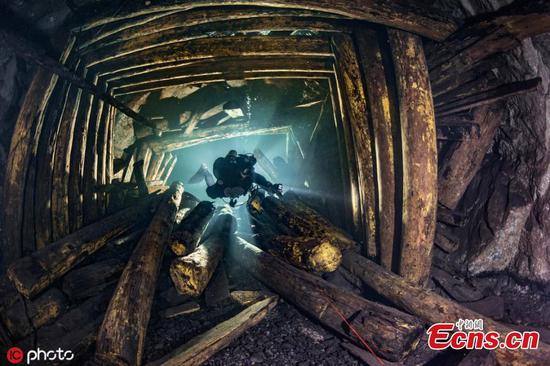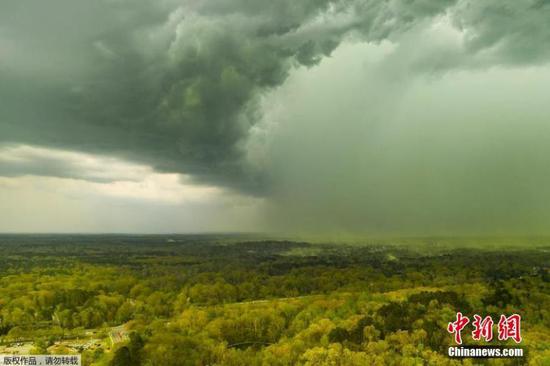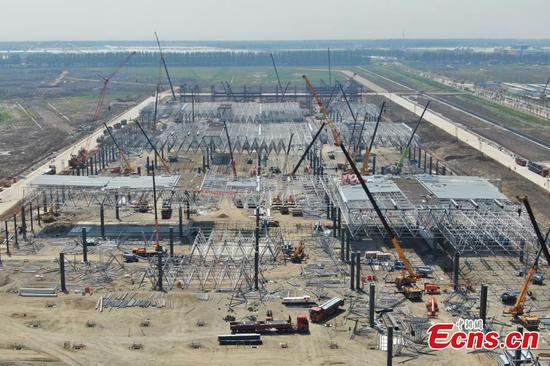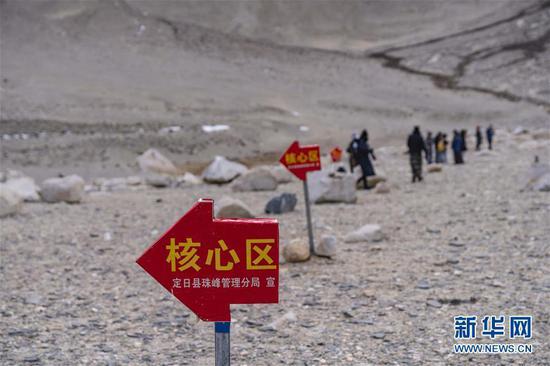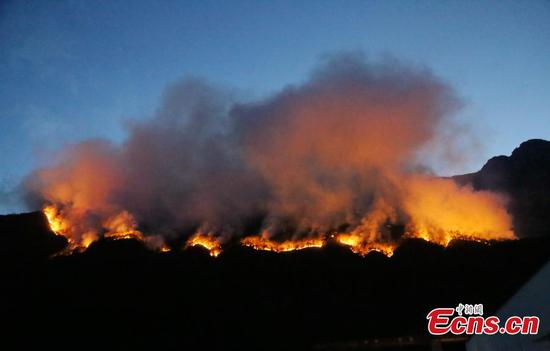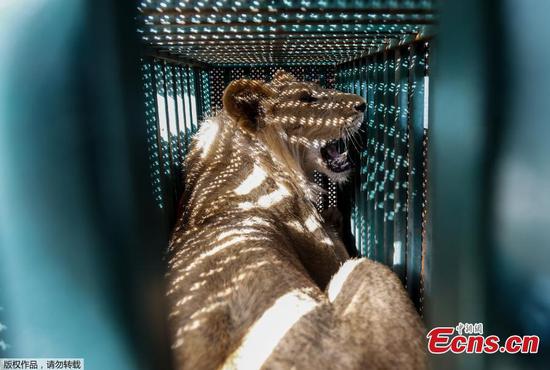
An aerial view of the Jiangsu Tianjiayi Chemical Co in Xiangshui county, Yancheng, Jiangsu Province, after the explosion on March 21. (WANG JING/CHINA DAILY)
Problems remain
Hazardous waste could potentially be radioactive, toxic, highly corrosive or otherwise harmful to people and the environment. Therefore, these materials require special treatment.
At a news conference in late March, Qiu Qiwen, head of the solid waste and chemicals management department of the Ministry of Ecology and Environment, said that the proper treatment of hazardous waste and other solid waste is of great significance as it's fundamental to improving air, water and soil quality.
Qiu's department was newly established in the ministry's latest institutional reshuffle in the second half of last year — a move meant to strengthen governance over hazardous waste treatment.
Qiu said the country's capacity for hazardous waste treatment reached 75 million tons in 2017, 2.3 times that of 2012. Meanwhile, about 40 million tons of industrial hazardous waste was generated in 202 major cities across the country in 2017, according to the ministry.
China, however, still lacks a sound system for hazardous waste management. According to an enforcement report of the Solid Waste Control Law released by the National People's Congress Standing Committee, the top legislature, in November 2017, the total amount of hazardous waste in the country remains unverified.
Over 40 percent of China's capacity for processing hazardous waste often remains idle. Every year, more than half of the hazardous waste generated across the country was utilized or disposed of by its respective producers, and most of this activity was unsupervised, the report said.
Wang Yi, a member of the NPC Committee of Environment Protection and Resources Conservation Committee, told China Daily in March that supervisors lack a clear idea of how much hazardous waste is being produced annually nationwide.
He said that based on the research of national legislators, China produces more than 80 million tons of hazardous waste per year, instead of the official figure of 40 million tons.
Therefore, the total capacity for hazardous waste treatment in the country is insufficient, according to Wang.
The utilization rate of the capacity for hazardous waste disposal also remains low. According to data that the Ministry of Ecology and Environment provided to the NPC Standing Committee in 2017, only about 25 percent of China's capacity was in full operation and data from other sources also shows low utilization rates, Wang said.
"Some enterprises have failed to build sound systems for hazardous waste management as required, or failed to implement them," Wang said, adding that some companies had turned a blind eye to loopholes in the production process that could result in hazardous waste leakage.
In one case, Baoxun Precision Screws Co Ltd in Zhejiang province was found to have dumped about 1,072 tons of hazardous sludge into the Yangtze River in Anhui and Jiangsu provinces from July 2016 to May 2017.
Baoxun pays 1,550 yuan for each ton of sludge it sends to qualified waste disposal operators. But it only paid 300 yuan per ton to individuals who carted it away to carry out unauthorized disposals, Xinhua News Agency reported.
Qiu, the environmental official, also acknowledged that capacity for authorized hazardous waste treatment is unevenly distributed across the country and enterprises in areas with inadequate capacity could be dissuaded from lawful practices by high disposal costs.
"The country's complete industry chain means that we generate a large variety of hazardous waste. The treatment is technically demanding and it can be hard for some regions to have the capacity to handle all types of hazardous waste," he said.
Wang said most companies with treatment licenses are located in the Yangtze and Pearl river deltas. The treatment capacity in regions with high discharge of hazardous waste, including Shandong, Henan and Hunan provinces and the Inner Mongolia autonomous region, however, remains insufficient.
Without a sound institutional system, there are still loopholes in the storage, collection and transportation of hazardous waste. Paper documents are still used in many areas as certificates for the transfer of hazardous waste, which could be easily forged and altered, he said.
Wang also said the country faces serious shortages of personnel for hazardous waste supervision, especially at the county-government level.









